Meet ‘Dot,’ a 153-Foot Converted Ferry That Doubles as a Waterfront Loft
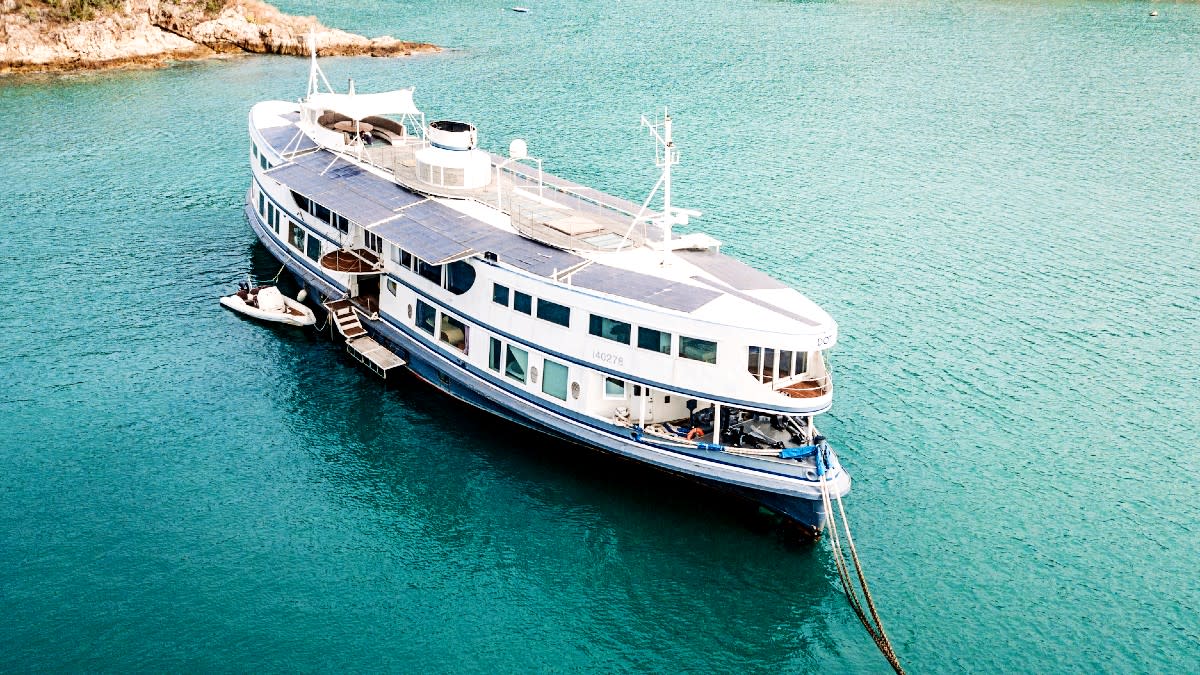
The 153-foot Dot is more than a yacht conversion. Once the flagship vessel in Hong Kong’s iconic Star Ferry fleet, the legacy boat is today a floating loft-style apartment with a swing mooring in the achingly hip Tai Tam Bay.
The Star Ferry Co. Ltd was started in 1870 by British businessman Grant Smith. He shipped a twin-screw wooden-hulled boat over from England and began running it across Hong Kong’s Victoria Harbour. Both the company name and ferry names (all feature the word “star”) were inspired by Alfred Lord Tennyson’s poem Crossing the Bar, from which the first line reads, “Sunset and evening star, and one clear call for me!”
More from Robb Report
This 190-Foot Custom Superyacht Is a Luxe Haven for Fitness Lovers
This New 100-Foot Superyacht Is a Modern Cruiser With the Soul of a Rugged Workboat
In 2011, when Golden Star, the largest ferry in the fleet, became the available for sale, a British-born Hong Kong resident saw potential for a weekend escape. He’d spent years in the late 80s commuting aboard the ferries between Wanchai and Hung Hom and knew the vessel’s robust, wide-hipped design would lend itself well to an open-plan layout.
The Leung Wan Kee shipyard in Zhuhai, which has carried out regular maintenance work on Star Ferries for decades, undertook Dot’s 18-month-conversion. The brief was to “dress Dot to her strengths” and create a weekend retreat for the new owner’s family. The conversion delivered that and more.
Here are 10 things you didn’t know about the world’s only ferry turned luxury yacht.
Best of Robb Report
Sign up for Robb Report's Newsletter. For the latest news, follow us on Facebook, Twitter, and Instagram.
Click here to read the full article.
Golden Star
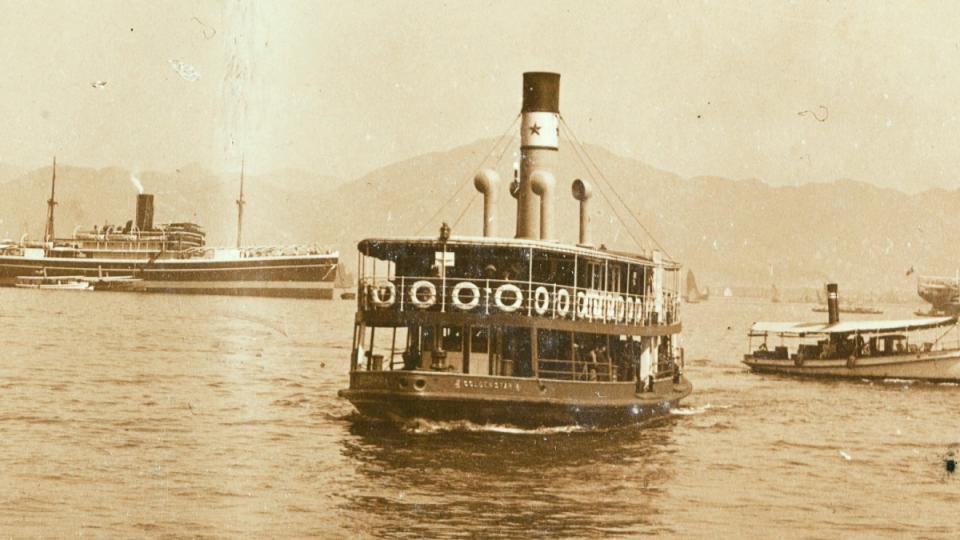
Dot was originally named Golden Star and was the flagship vessel in Hong Kong’s Star Ferry fleet. It was built in 1989 by Wang Tak Engineering & Shipbuilding Co Ltd., located in the city’s Kowloon district. Rising demand from commuter traffic drove a need to make the ferries larger, and Golden Star was built 36 feet longer than its predecessors.
Industrial Features
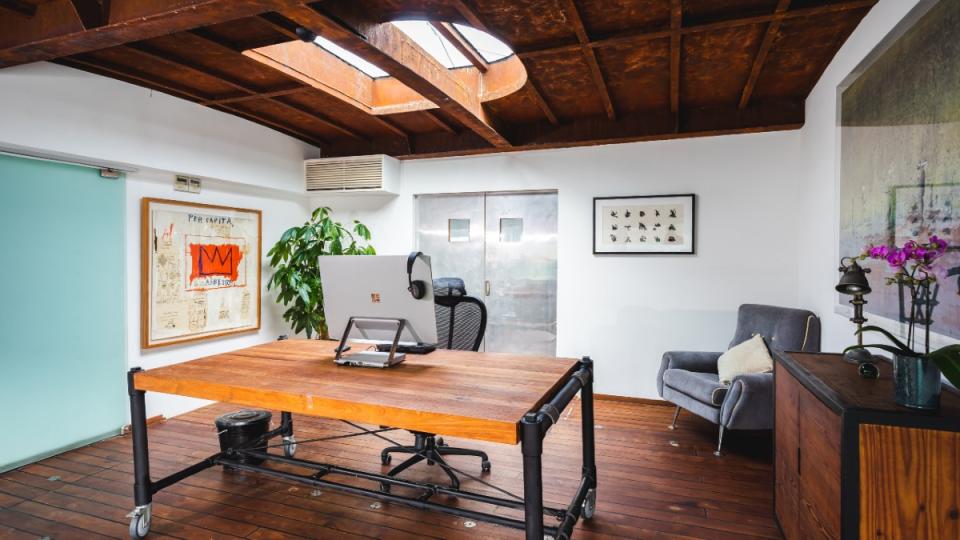
Dot’s industrial features—a thick steel hull and large wooden fenders—were relied upon during decades of service. Though no longer required for a private yacht, the boat’s heavy-duty framework appealed to the British owner, who allowed its brutalist elements to drive the layout—to the extreme. A rust finish was added to the stripped metal beams (visible here in the private office.) The original, well-worn thick teak floors and copious steel speak to a factory aesthetic more than an elegant residence.
Cirque du Soleil
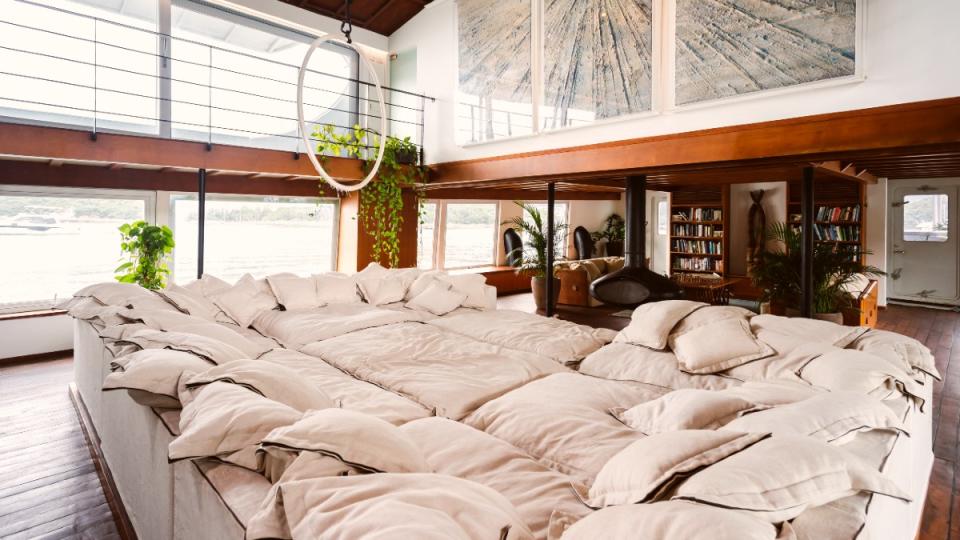
Dot was designed to have large open-plan living spaces akin to a Manhattan loft. Space and views are at a premium in Hong Kong, so Dot’s 6,000 square feet of waterfront real estate—plus 4,000 square feet of storage—are a rarity in the city. The high ceilings and cavernous space are best shown in the split-level mezzanine in the main salon, which has sliding glass doors, a supersized daybed covered in throw pillows, and even a trapeze hoop suspended by a rope for playful acrobatics.
Rooms With a View
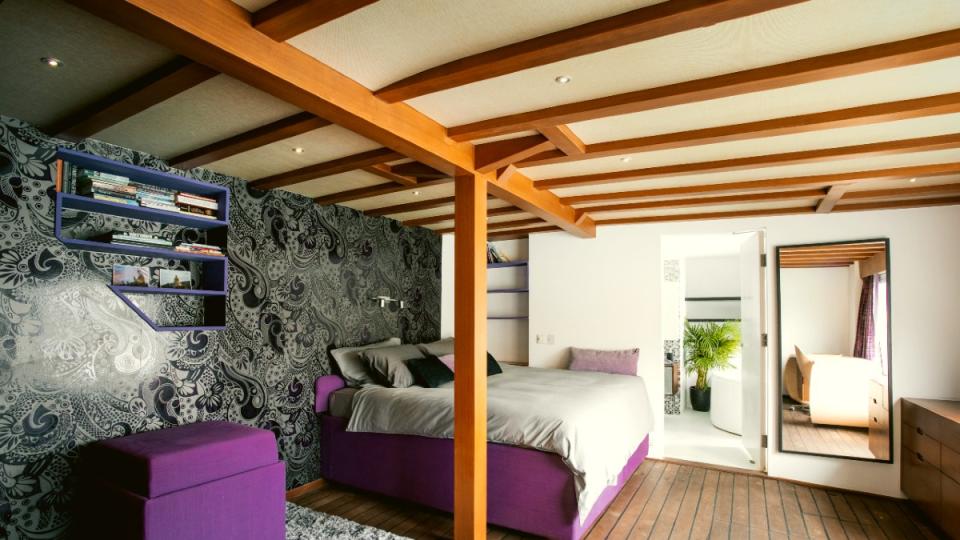
Dot sleeps eight guests in four en suite cabins, each with full-sized baths and separate showers. Bright pops of color, such as purple and lime green, as well as the bespoke shelving, add personality to the guest cabins.
Child’s Play
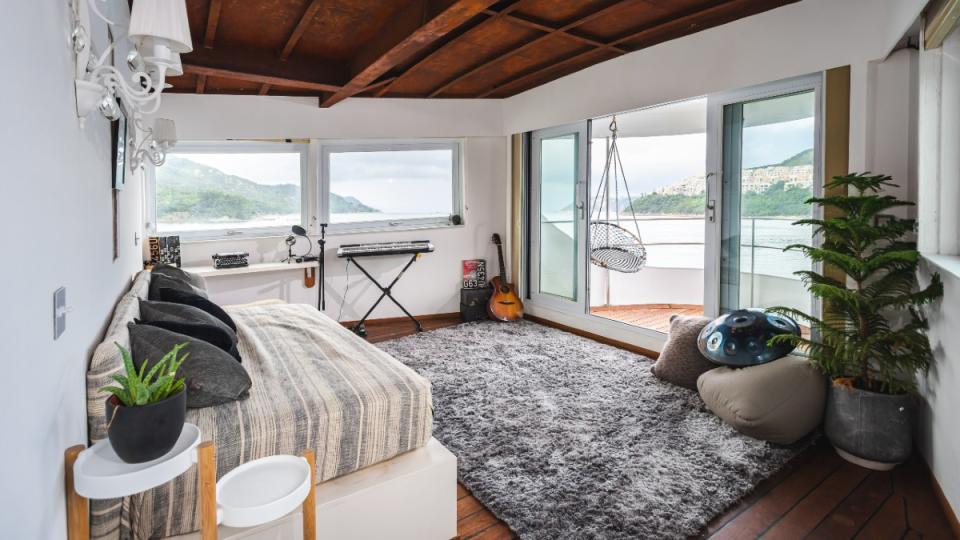
Younger guests are well catered for, with designated children’s play areas, study settings, and private cabins that enjoy direct access to the exterior decks.
Movie Star
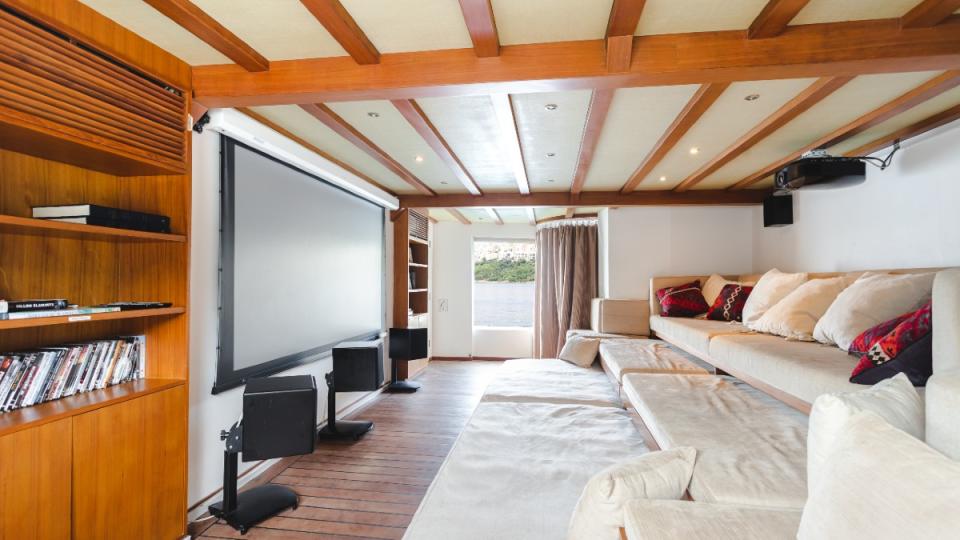
The dedicated full-beam cinema room has three-tiered seating that is large enough for friends and family to enjoy the latest blockbuster together.
Sustainable Style
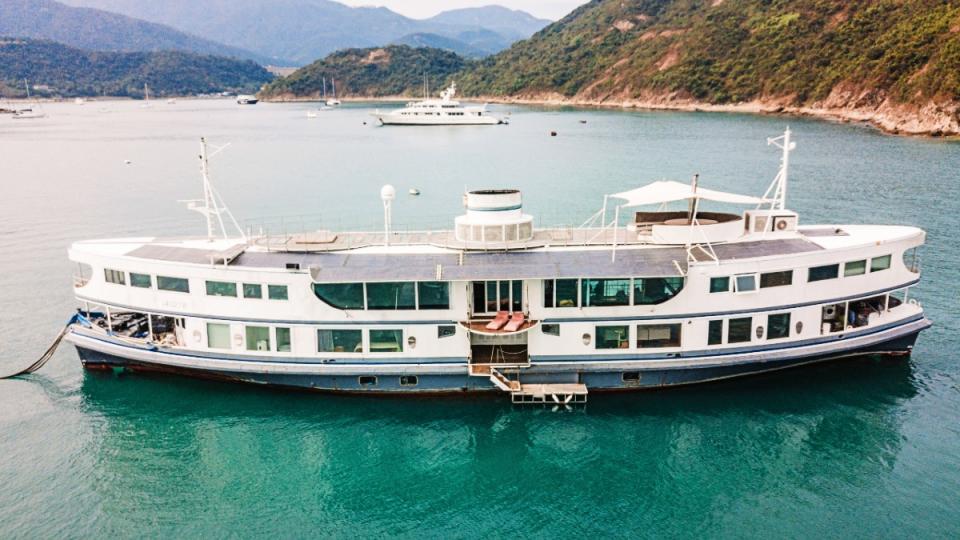
Attempts to make the yacht as sustainable as possible had some success. They include a rainwater collection system and a separate water-filter system for converting seawater to drinking water. Large solar panels on the roof provide 75 percent of the yacht’s energy needs, including the much-needed air conditioning units which are typically any vessel’s largest power draw. One of the biggest challenges was getting the water makers robust enough to handle sea water in the winter months when the harvested rainwater runs out. As a sustainability side note, the Star Ferry company made history in 1933 with Electric Star, the first diesel-electric passenger ferry of its kind.
Outdoor Dining
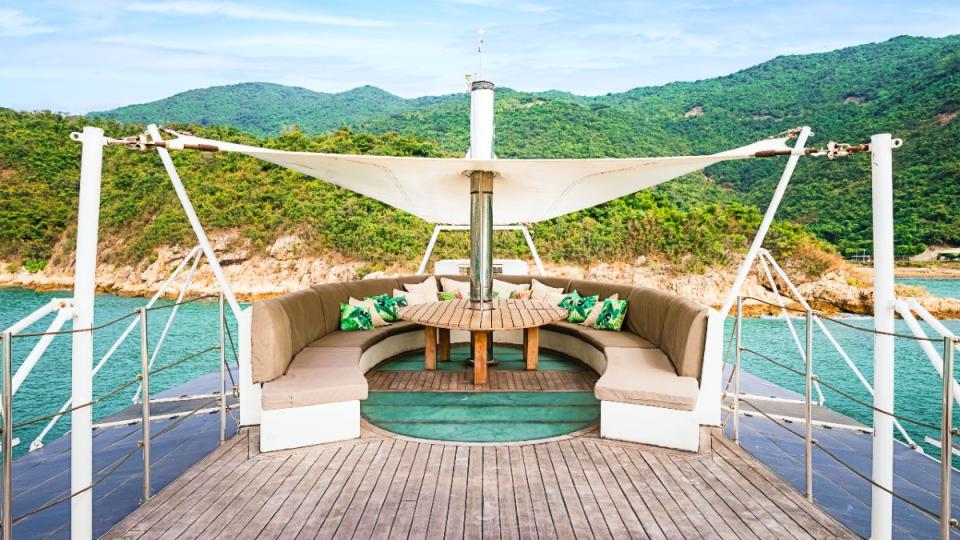
A cozy nook on the sun deck is ideal for alfresco lunches shaded by overhead canopies. Glass skylights allow views of the interior below, while the original two-inch-thick decks designed to handle the former ferry’s 200 daily passengers add an authentic touch.
Hybrid Design
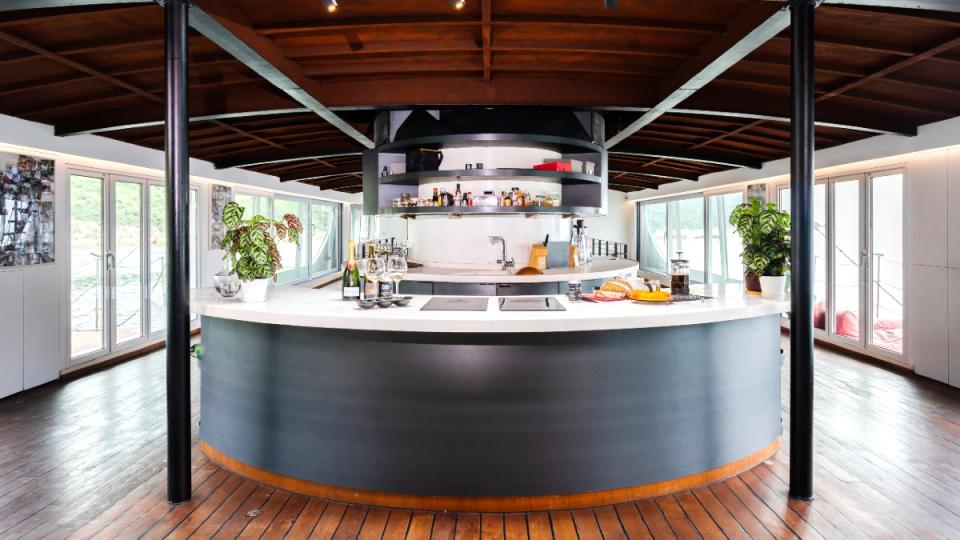
For the first-time yacht owner, Dot was a complicated conversion project. The owner enlisted a French residential designer, who had previously converted a large sea-going Dutch barge into a family home, to undertake the interior refit. The result is a collection of intimate areas designed for both family life and social gatherings. A key feature is the industrial chic on the pictured upper mezzanine, a fusion of old and new.
Going The Distance
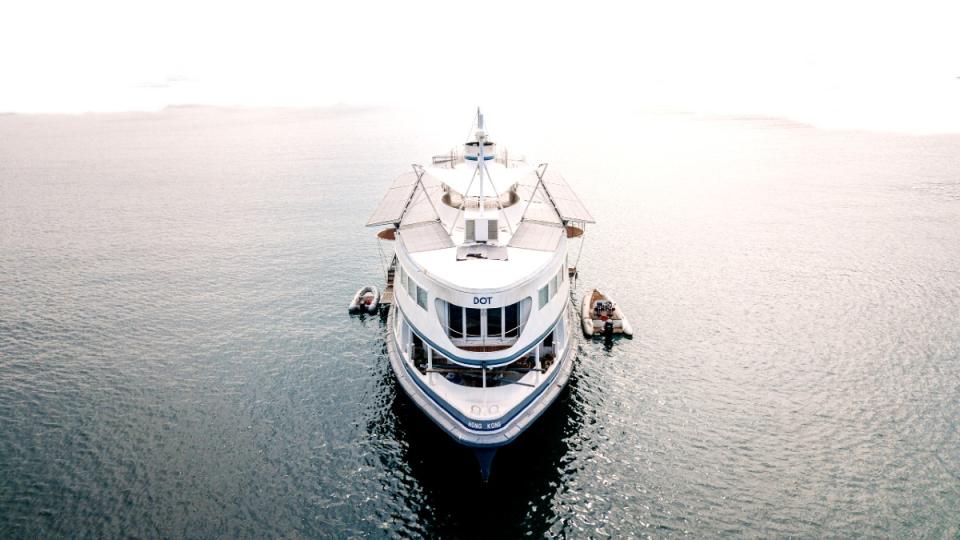
Dot may have been imagined as a weekend home, but the boat has an oceangoing range of 10,000 nautical miles, thanks to its nearly 26,500-gallon fuel tanks. Powered by twin 780 hp MAN engines, the boat can cruise at nine knots in both directions—since the bow and stern resemble each other. That’s another quirk of its Star Ferry days.


